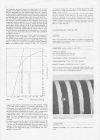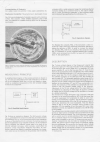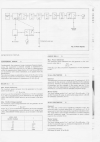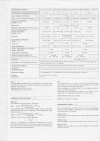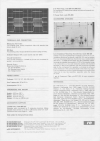-
WANTED: Happy members who like to discuss audio and other topics related to our interest. Desire to learn and share knowledge of science required. There are many reviews of audio hardware and expert members to help answer your questions. Click here to have your audio equipment measured for free!
- Forums
- Audio, Audio, Audio!
- Amplifiers, Phono preamp, and Analog Audio Review
- Stereo and Multichannel Amplifier Reviews
You are using an out of date browser. It may not display this or other websites correctly.
You should upgrade or use an alternative browser.
You should upgrade or use an alternative browser.
Vera Audio P400/1000 Review (Amplifier)
- Thread starter amirm
- Start date
solderdude
Grand Contributor
I have measured the distortion in many resistors and the Susumu metal film resistors are the best.
Did you make a measurement report and is that available ?
How did you measure resistor distortion and in what magnitude were the differences ?
Walter
Addicted to Fun and Learning
- Joined
- Aug 25, 2020
- Messages
- 863
- Likes
- 1,257
Interesting how tastes differ. I actually prefer the design of the Vera, and by a pretty large margin.I tend to agree, we are in the same price class, and power class here with the NAD M23 which uses the higher end Purifi modules and an industrial design on an other level. It makes this a hard sell.
I can see your argument. It is not easy to reach back and remember where the gain and bridge knobs are. On the other hand, we see the gain switches as an installation "set and forget" feature much as the bridged knob.I looked, read, looked again, I was about to give up that, shame, there is nothing I can criticize, the horror!
Then I found it!
I don't like a major set-up setting like stereo/bridged to be treated the same as operational settings like gain and that they are placed next to each other. You use the bridge switch once the amplifier is connected but you adjust the gain controls later on. It is entirely possible to change the amplifier mode by mistake if you are trying to adjust the level controls standing in front of the amplifier but reaching the knobs at the back.
View attachment 180977
It would have been perfect if the bridge switch would be made different and difficult to be used by mistake. A slider switch with a recessed tag is the best for such settings. Example below.
View attachment 180976
Needless to say. I am nit picking. I voted Great. However, excellence is not easy to achieve.
In addition, there is no harm if you accidentally use the bridge knob while the amp is in use. The only thing that happens when the bridge switch is set to "bridged" is that the right input will be routed to both outputs and you end up with mono sound
Last edited:
I know it is very personal, but to me, that power button in that position in 2022 screams DIY. Don't kill me, i repeat, personal taste.
Out of curiosity, where does this preference, and/or the opinion come from - that having no front power control = superior industrial design? Other than minimalist aesthetic, why is an accessible power control on an amplifier bad? Genuinely interested in answers from anyone with an opinion. Thanks!I tend to agree, we are in the same price class, and power class here with the NAD M23 which uses the higher end Purifi modules and an industrial design on an other level. It makes this a hard sell.
The test I did was not very scientific. I just tested different types by soldering them on the PCB in our buffer and measure distortion with an Audio Analyzer. (R&S UPV). The test was done with a somewhat high voltage of 10V RMS to better resolve the temperature coefficient.Did you make a measurement report and is that available ?
How did you measure resistor distortion and in what magnitude were the differences ?
My initial though was that the larger MELF resistors were superior, but the small 0805 Susumu resistors in the somewhat expensive RG series are really good
Here is the difference between Susumu RG2012P-2490-B-T5 125mW 0,1% with a temp. Co. of 25 PPM/C and a Vishay 250mW 0.1% MELF resistor. As ecpected it is in the low frequencies the differences show up.
It is truly refreshing to see an audio component manufacturer respond to a difference of opinion in such a polite and articulate manner.I can see your argument.
Thank you for your diplomacy - and your outstanding amplifiers!
I personally was referring to this particular model of button that you see very often in diy amps and about the position i was referring to the center of the fascia, also very typical diy. Again, personal taste, this amp seems to be anything but diyOut of curiosity, where does this preference, and/or the opinion come from - that having no front power control = superior industrial design? Other than minimalist aesthetic, why is an accessible power control on an amplifier bad? Genuinely interested in answers from anyone with an opinion. Thanks!
But to answer your question i can also give you an example. Very recently here an amp coming also from Norway was criticised for having the power button hidden under the front panel. I had that amp and think it was a great place to have it: very accessible, discrete, not evident for the curious visiting child.... yes, if you are a reviewer and you use 5 amps a week can be difficult to find, but when it is your amp, your fingers will go directly to that exact point after a few days and forever. Just an example.
Also agree with aasearles that specially at this price level there very pretty devices that go well beyond the aluminium brick
My 2cents.
Are we going to talk about this? Edit : @restorer-john did.
View attachment 180939
Thanks, @biglebowski
The two internal amplifier modules works out of phase, so the colour choice is intentional. One can argue that it would be better to connect red/back differently on the PCB on the left channel but then this would be confusing when looking at this when the amp is in bridged mode. I find it more natural to look at the red wires as the "active" wires and black as ground.
The reason the amplifiers are working out of phase is as pointed our earlier in the thread because of the topology of the amplifiers and the power supply. 1 quadrant SMPS (SMPS3k) and half bridge amplifiers (NC500).
The reverse currents present in all class D amplifiers at low frequencies will in this configuration flow directly to the other amplifier and vice versa. In the very rare cases where one channel have a much higher LF load than the other, a custom made "over voltage" system will make sure the voltage never exeeds harmful levels by dumping current to ground.
You should get this.The test I did was not very scientific. I just tested different types by soldering them on the PCB in our buffer and measure distortion with an Audio Analyzer. (R&S UPV). The test was done with a somewhat high voltage of 10V RMS to better resolve the temperature coefficient.
My initial though was that the larger MELF resistors were superior, but the small 0805 Susumu resistors in the somewhat expensive RG series are really good
Here is the difference between Susumu RG2012P-2490-B-T5 125mW 0,1% with a temp. Co. of 25 PPM/C and a Vishay 250mW 0.1% MELF resistor. As ecpected it is in the low frequencies the differences show up.
View attachment 181070
Attachments
Thank you for the reply. Very much appreciated. I have not noticed that gain was also switched. My note would be valid if they were potentiometers.I can see your argument. It is not easy to reach back and remember where the gain and bridge knobs are. On the other hand, we see the gain switches as an installation "set and forget" feature much as the bridged knob.
In addition, there is no harm if you accidentally use the bridge knob while the amp is in use. The only thing that happens when the bridge switch is set to "bridged" is that the right input will be routed to both outputs and you end up with mono sound
Damn! There is nothing left to complain now. This means I have to give you an excellent mark!
Well done
Adam-Clint-G247 in the house.My hand is on the Delete Post and Warn Poster Button! Go ahead and make my Day…..
On Edit: I guess I have to clarify since two members raced each other to see who would be first to get a Warning! No Political content of any kind permitted. Sheesh
Refresher reading: Rules for Review Threads
Fine amplifier that might not offer the best price/quality ratio compared to similar Hypex based offers by Buckeye
Basically just personal taste. Molded aluminium with round corners. The two tone aestetics, the finish, the top vents, etc.. About the button, nothing reaally wrong with it, it's just that it's a vastly popular off the shelf button from E switch that we see everywhere from anybody building stuff. That said it's not a bad looking amp.Out of curiosity, where does this preference, and/or the opinion come from - that having no front power control = superior industrial design? Other than minimalist aesthetic, why is an accessible power control on an amplifier bad? Genuinely interested in answers from anyone with an opinion. Thanks!
Last edited:
Yes we are! Hoping your wife (and home) have a full recovery.Thanks for another very interesting review, Amir. And all the best to you and your wife. You should know that a lot of us are thinking about you.
Hasn't gain been on the back traditionally? I have an old Heathkit power amp that's 40+ yrs old with variable gain controls on the back.I like the design - but I would still like to have the gain control on the front (same goes for Schiit's tendency to power/gain switchen on the back).
and generally get's in the way of the good. But hey, this is audio we're talking about.I looked, read, looked again, I was about to give up that, shame, there is nothing I can criticize, the horror!
Then I found it!
I don't like a major set-up setting like stereo/bridged to be treated the same as operational settings like gain and that they are placed next to each other. You use the bridge switch once the amplifier is connected but you adjust the gain controls later on. It is entirely possible to change the amplifier mode by mistake if you are trying to adjust the level controls standing in front of the amplifier but reaching the knobs at the back.
View attachment 180977
It would have been perfect if the bridge switch would be made different and difficult to be used by mistake. A slider switch with a recessed tag is the best for such settings. Example below.
View attachment 180976
Needless to say. I am nit picking. I voted Great. However, excellence is not easy to achieve.
- Joined
- Dec 21, 2020
- Messages
- 2,088
- Likes
- 3,107
I don't see a reasonable value equation in the Vera Audio P400/1000 amp. From the measurements it looks like the Purifi design offers similar performance for almost 1/3 the cost. The hand written 120 VAC on the back seems to indicate it's not really designed for USA distribution? And as far as a switch for gain it's just another part that can fail. The XLR inputs are mounted too close together for my taste. I'll skip this one for the upcoming Buckeye Purifi model. 
Similar threads
- Replies
- 0
- Views
- 259
- Replies
- 826
- Views
- 120K
- Replies
- 134
- Views
- 23K
- Replies
- 100
- Views
- 25K

